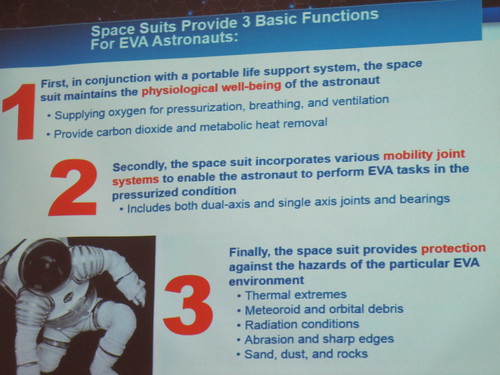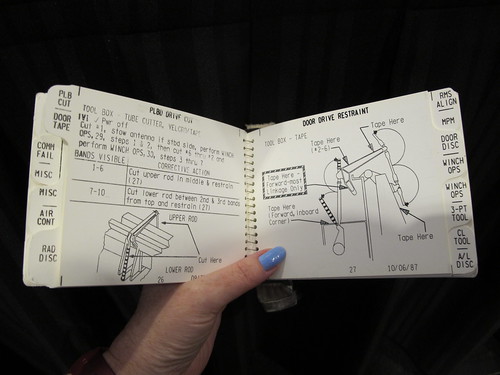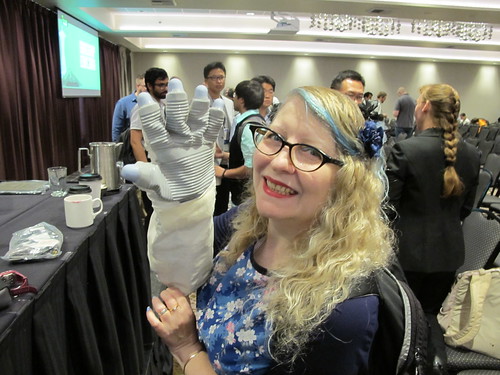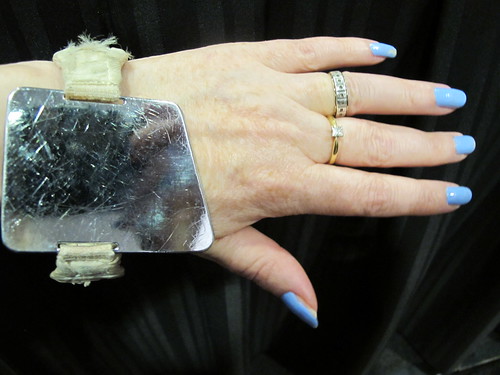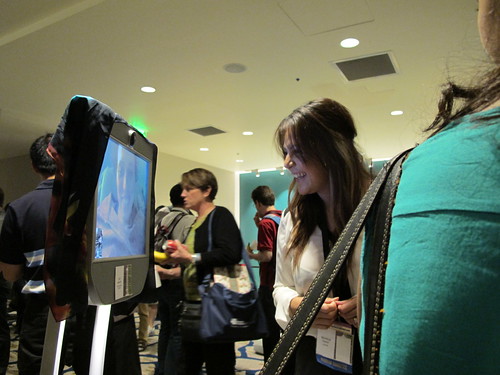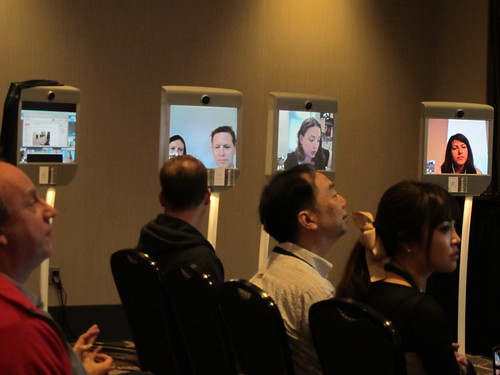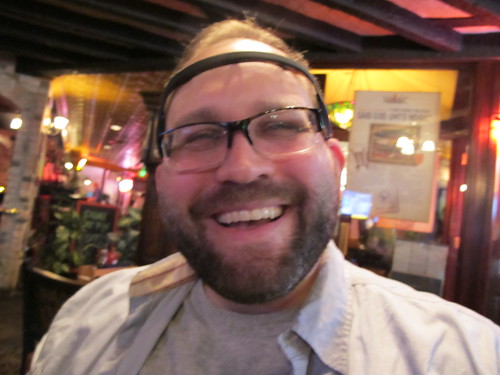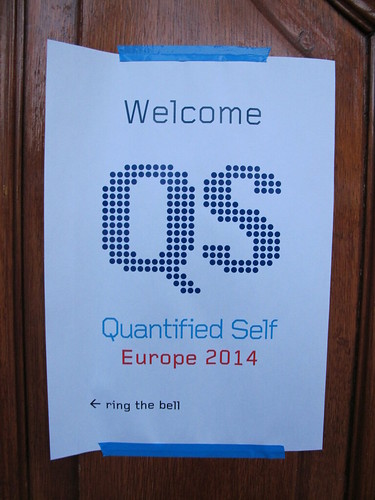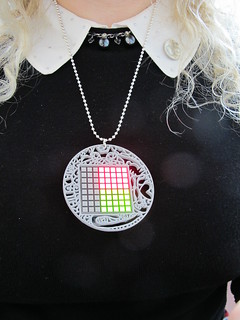Thinking Digital 2011 was the forth annual melding of minds shaped into a conference that brings together what’s new in innovative ideas, technology and thoughts on life in the digital age. It’s run by the awesome Herb Kim and his Codeworks team and is held at the Sage, Gateshead, Tyne and Wear.

The conference is popular with thinkers, scientists, makers, entrepreneurs and academics, because it has a slightly different slant to it than your usual tech conference, but through the choice of speakers and topics, it pulls the audience into the conversation, the subjects are not arbitrary, but are relevant to many.
On reflection, last year’s conference seemed to surround the theme of ‘data’: your data, my data, our data – data as a commodity. Richard Titus, who spoke at last year’s conference declared ‘Data is the new oil’ which struck a chord with many of the attendees. This year’s Thinking Digital, for me, was all about sensing things whether that be health, resonating with others, brainwaves, robots or campaigns.
There’s rather a lot to talk about and even cutting my notes down loads, I’ve far too much to say – anyways, I’m splitting it into two posts: day one and day two…
I’m going to start with Walter de Brouwer, as I create wearable sensing technology that responds to input, so his talk really resonated with me.

Walter De Brouwer is the CEO of OLPC Europe; the European Branch of the One Laptop per Child Initiative, discussed the issues surrounding the future of healthcare and how as patients and relatives we can take charge of our own health. He spoke passionately about his personal catalyst for this – a traumatic experience involving his child enduring a stay in intensive care. How the experience of watching machines and nurses logging numerical data over time starts to familiarize the watching relatives with which measurements signify good news and which do not. Walter asked, ‘but why do we only take number measurements when we are dying?’ Indeed, we should be steadily ‘life caching’ medical data ourselves because the medical records our GPs keep are just a punctuated data stream- i.e. they’re very sketchy because they’re not regularly updated and compared, plus are also passed through different doctors over time. He stated ‘ the best way to create the future is to prevent it ‘ – meaning look after yourself now and invest in your personal data to interpret the signs of illness before they happen. Which I feel is pretty sound advice actually, seeing as most major illness’ are only usually picked up by doctors when they are in an advanced stage and hard to treat.
Having access to so much information on the web the patient is becoming a consumer and the do it yourself healthcare movement is getting bigger. We now have access to so many data capturing devices we can keep log of our own health readings, plus if would be totally logical to share and compare this data with our friends to find out for ourselves why some people are happier, healthier and have more energy than others – comparing lifestyles, what we eat, how long we sleep, etc. There is already a worldwide movement leading the way in this self-logging lifestyle, that’s The Quantified Self movement, whose mantra is ‘self knowledge through numbers’ and they log everything they can – for example: blood pressure, weight, exercise, cholesterol, heart rate, arousal and sleep patterns.

Walter fully believes that the globalization of private medicine is unstoppable now and we can shop for the best practitioners who have the least patients, most time and do all your health running around for you – such as booking scans and regular health checks. This is all very nice, but relies on you having the income to fund this lifestyle, as it gets very expensive! This way of running healthcare probably works only for the top earners and of course probably isn’t inclusive to people on benefits or those on low incomes.
Anyways, if you have the income there is a plethora of choices open to ‘Cybercondriacs’ and full body scans are very popular, of course the price depends on where you go to get it done but ranges between 100-700 dollars, India being the cheapest place to go right now. But remember, as mentioned above you can keep your own records and use sensing apps to log them, though the challenge will be how do we and doctors analyse and hang on to all this exponentially generated data? Walter suggests perhaps not in The Cloud: ‘ The Cloud is like a public toilet for your records, you don’t know who’s been there before you!”
So in conclusion, Walter feels your health will become a number – the data is free to gather, but the interpretation by your doctor is not! As doctors begin to prescribe apps rather than meds for health they will become overloaded with data and we’ll need systems to cope with it all. Walter suggested that we may end up with systems similar to an already existing car maintenance system in the US called OnStar – which is a call centre diagnostic type of affair. Ultimately, we are responsible for our own health and should look at our lifestyles and those of our friends to compare what is good for us while we wait for someone to invent a 21st Century version of the Star Trek Tricorder – a complete diagnostic device!
Erin McKean has been a dictionary evangelist for 18 years and is now a founder of Wordnik, an online dictionary that hopes to redefine how we view and use dictionaries. Wordnik has the tag line / definition as ‘Wordnik is a place for all the words, and everything known about them’. It’s a place to find and log words and not just one definition, there are many ways to define and tag words, including sentences, images and statistics. Looking at the Community page http://www.wordnik.com/community, I find tons of words defined by lists such as new words, recent comments, recently favourited, random, trending and previous words of the day.

During her presentation she offered her thoughts on defining dictionaries and word usage, Erin introduced us to the term ‘skeumorph’, which is defined by the Oxford Dictionary as “an object or feature which imitates the design of a similar artifact in another material” – to illustrate Erin showed us plastic garden chairs that were copies of retro wooden chairs which included a wood grain pattern on the plastic! Erin took us through the pros and cons of using dictionaries in both paper and digital form, such as the problem of new words not showing up quick enough and in the realm of learning she informed us that humans learn words by using them in a sentence, rather than by looking them up. I’ll be interested to hear what people do with the Wordnik API. PS, I was very much admiring Erin’s lovely dresses, so was very happy to find her blog A Dress A Day 🙂
Conrad Wolfram, founder and CEO of Wolfram Research discussed the notion of ‘computation for everyone’ – where computation meets knowledge and is democratised so that everyone can use it. He’d like to see governments and organisations make their data more accessible and active online rather than just in papers.

He’s keen to do this by creating new ways that we can visualise data and information and has come up with a computable documentation format (CDF), which uses techniques to show live data and make it more interesting to the viewer. You can play with examples of this on the Wolfram Demonstrations Project.

Conrad is also passionate about maths and other STEM (science, technology, engineering and maths) tuition in education and is leading a computer-based maths education summit in London later this year at the Royal Institution – wish I could get a ticket!
Nancy Duates of Duarte Design
showed us via some examples of her studies into cinema, how storytelling is the best way to communicate an idea in a presentation or speech. Her slides showed examples of how using a story framework (visualized as a square wave) showed how verbally alternating between an obstacle and then resolution (or negative then positive) sound bite resonates with the audience and builds up empathy – equating to persuasion = transformation with the listener.

She also talked about injecting passion into stories “when you say ‘I’ve an idea’ – you’re saying you want to change the world!” and noting how we physically react to others when we hear a story. Her three-point framework included the following stages:
1. Likeable hero
2. Encounters roadblocks
3. Emerges transformed

During Nancy’s two-year study of storytelling she discovered various frameworks including Freytag’s dramatic 5 point story structure which emerges as: exposition / rising action / climax / falling action / denouncement and how ‘tacking’ (sailing metaphor) your story backwards and forwards holds the attention of your audience. She analysed two powerful presentations to show how her square wave theory works: one by Steve Jobs, launching iPhone and the other Martin Luther King’s ‘I have a dream’ speech – each showed the square wave alternating between a downside/problem and a glowing resolution (what is, what could be). I found her talk fascinating and will definitely look back on it and consider her techniques when I next have a presentation to write.
Ewan McIntosh, CEO, NoTosh Ltd, told the story of the SNP historic election win this year which he co-directed, and they did it via a system that was designed to stop this happening! So how did the SNP win it? When the campaign started the SNP was 15 points behind Labour, but when it ended the SNP was 18 points ahead. They did it by using a ruthlessly planned strategy, much of it using digital media.
He told us “we don’t do enough listening in digital media” and went on to give us some of his tips on engaging voters of all ages, including:
1. Have a strategy – with detail, pace, leadership and be agile – “You don’t need to have a ‘plan’, or a ‘to do list’ but a strategy”
2. Share the same message – be consistent and have a meeting every morning and agree what’s going to be said that day – share the message and make it understandable by people
3. Learn to listen – find out what they like, don’t like and what motivates them -stay relentlessly positive online

“So did digital win votes? Yes it did!” Ewan went on to explain that the ultimate reason for campaigning online was to get people doing stuff offline, which worked and it’s changed the way governments listen to people and that digital is absolutely key to stalking ambition.
Ewan summed up with ‘the SNP campaign has changed not only Scotland’s place in world, but also how government engages with people and how digital can be used as a force for change”. As someone who has done a lot of high-profile project management over the years for the BBC, I was really interested in how Ewan’s strategy panned out across the campaign.
Heather Knight of Marilyn Monrobot creates live robot theatre performances and is a researcher at Carnegie Mellon Robotics Institute. Heather started by letting Data her Nao robot introduce her and do an amusing comedy performance, which included a little dance at the end.

I couldn’t help but look up the Nao robot and discovered it is programmable in C++, C, Python, Urbi, .Net languages. Interestingly, it’s runs on Linux OS, but is cross platform compatible, and I read Aldebaran Robotics are going to open source some of Nao’s code in 2011 and for those who want their own a public version is aimed to be released in 2012. I noted in the Q & A that Heather was asked how much a Nao robot would cost, to which she replied about 12,000 Euros.
Heather’s other work has included a touch sensitive ‘Sensate Bear’ for use in hospitals to help understand non-verbal communication via touch.
She is interested in how socially accepted robots can be integrated into society and has done work with her performing robot in public areas to analyse how the public reacts to their performance and in turn how the robot’s personality can be tweaked to work with humans – the goal being to help machines understand human traits such as charisma and humour.

Heather also has a portfolio of digital art and is organising The Robot Film Festival in New York in July 2011.
It was a nice touch for Heather to finish on a story about her work on the epic Ok Go ‘This Too Shall Pass’ video, which the audience really enjoyed + a few added factoid morsels about the making of too. I enjoyed hearing from a female engineer very much and would like to hear more about Heather’s research with human / robot reactions, and also her digital artworks.
So that’s it, my epic and rambling round-up of some of Thinking Digital’s day one presentations and talks. I’m going to have a rest now before I launch into day two!

